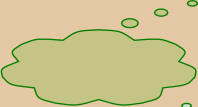











(Pages 4-12) plus ..
to get an exemption from Matriculation somehow. Some people might be interested to know that during the School Certificate Exams we were often interrupted by air raids and had to go to the shelters - being put on our honour not to crib or discuss our papers. It will surprise you that none of us did. Beat that for honesty if you can! I had bee interested in aircraft and flying from a very early age. After all, in the early 1930‘s flying was a comparatively recent thing and was still exciting. VERY few people had actually flown as it was a wealthy persons sport or pleasure then. My parents used to take me to the Hendon Air Displays in the early 1930‘s as it was only about 5 miles south of where we lived. Then we used to go to Whipsnade Zoo at Dunstable quite a bit and of course that was where a lot of early Gliding was done, on Dunstable Down.
So it was obvious that as soon as I was able to, aged 14, I joined the Air Training Corps and enjoyed all the visits to operational air bases (USAF as well as RAF) and was lucky to fly in various pre-war aircraft such as Avro Anson, De Havilland Rapide and Percival Proctor. I took Air Spotter magazine regularly, bought all 7 volumes of “Aircraft of the Fighting Powers” that gave 1/72nd scale drawings of warplanes. I also designed and built gliders; I suppose it was only natural that my intention at that stage was to become an aeronautical engineer. However, that wasn’t to be either because by the time I was demobbed and thinking about careers Dad said, quite rightly, that with all the ex-RAF serving officers and men there’d be a huge number of better qualified and experienced people wanting to get into the aircraft industry! So I decided Quantity Surveying sounded interesting but again my parents steered me away from it. So I just drifted into the Civil Service. However, I’m getting ahead of myself.
I volunteered for Fleet Air Arm Air Crew duties under the “Y” scheme when I was 17¼ in March 1944, and was placed on the Reserve List. I heard nothing more until 14th January 1946, when I was re-categorised as a Navy Writer, aged 19 and 2 months. Because I’d volunteered during wartime I was regarded as a “Hostilities only” rating and had demobilisation group 72. It was many years later that I learnt the delayed call-up was due to the limited flying training facilities, mainly in Rhodesia and Canada, plus a large backlog of volunteers!
One good thing to come out of it was that my Air Training Corps Squadron (No. 1374 East Barnet) sent me to Glider training school at Elstree and I got my “C” Gliding Licence, a very basic straight line flight at about 500 ft. Altitiude! Another interesting aspect was that one of my postings was to H.M.S. Hornbill, a Naval Air Station at Culham, near Abingdon in Oxfordshire. This was a Receipt and Despatch Unit. We received aircraft from their manufacturers and fitted them with their military equipment such as radios, radar and other electronics, guns, bomb racks, etc. They were then “Tested and Tuned”, which included setting up the guns in huge butts, so that shells from all the guns focussed to a point at a specific distance, before being sent on to their operational squadrons. My job was recording the modification states of all items installed in the aircraft. We handled mostly Seafires, Sea Mosquitos
So it was obvious that as soon as I was able to, aged 14, I joined the Air Training Corps and enjoyed all the visits to operational air bases (USAF as well as RAF) and was lucky to fly in various pre-
I volunteered for Fleet Air Arm Air Crew duties under the “Y” scheme when I was 17¼ in March 1944, and was placed on the Reserve List. I heard nothing more until 14th January 1946, when I was re-
One good thing to come out of it was that my Air Training Corps Squadron (No. 1374 East Barnet) sent me to Glider training school at Elstree and I got my “C” Gliding Licence, a very basic straight line flight at about 500 ft. Altitiude! Another interesting aspect was that one of my postings was to H.M.S. Hornbill, a Naval Air Station at Culham, near Abingdon in Oxfordshire. This was a Receipt and Despatch Unit. We received aircraft from their manufacturers and fitted them with their military equipment such as radios, radar and other electronics, guns, bomb racks, etc. They were then “Tested and Tuned”, which included setting up the guns in huge butts, so that shells from all the guns focussed to a point at a specific distance, before being sent on to their operational squadrons. My job was recording the modification states of all items installed in the aircraft. We handled mostly Seafires, Sea Mosquitos
10
Gloucestershire COPE Family Site.
My COPE FAMILY (continued). (Page 7 of 9)